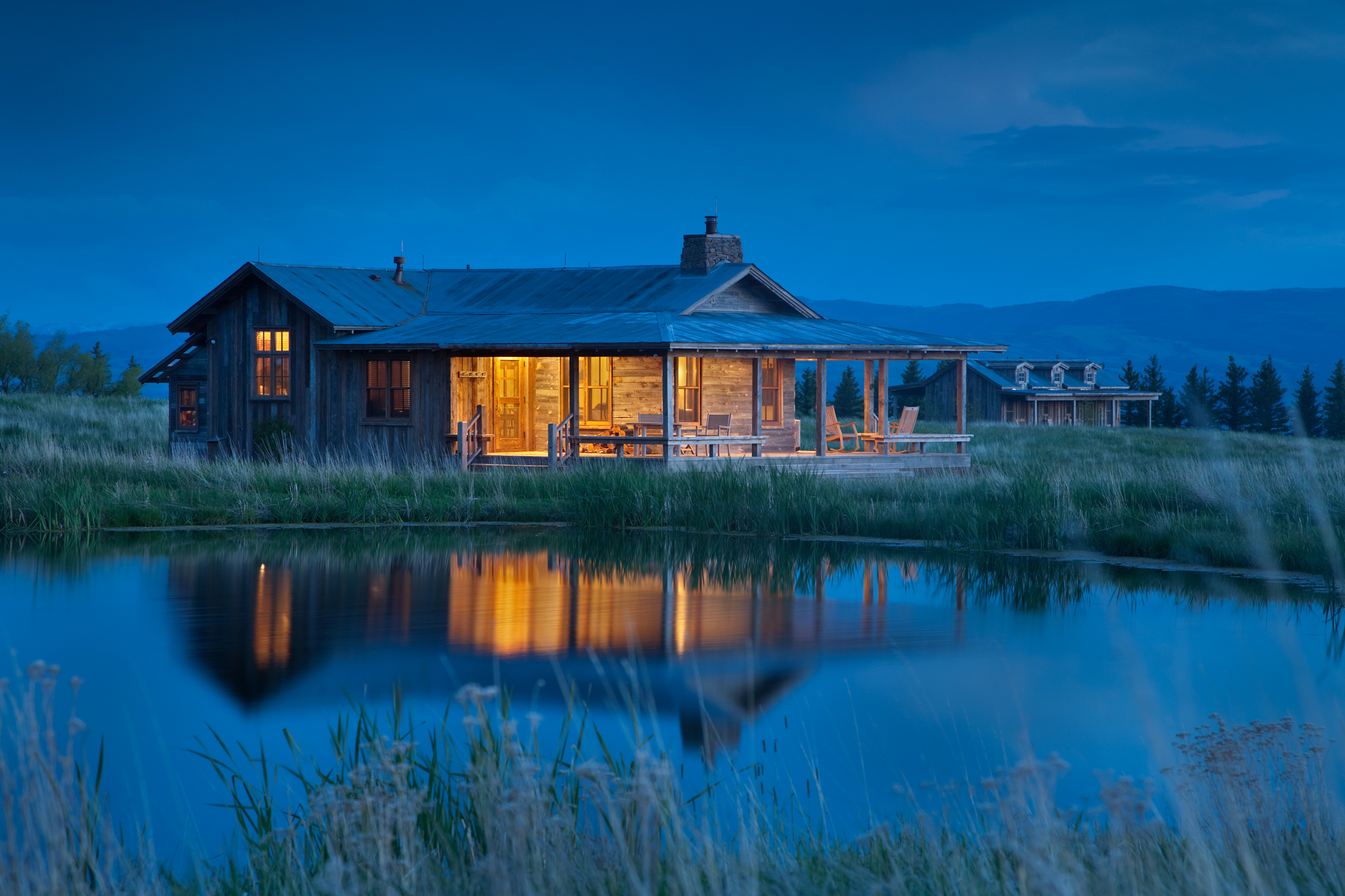
23 Jul Authentically Western
GHOSTS INSPIRE ARCHITECT CANDACE TILOTTSON-MILLER’S DESIGNS. You’ve seen them, too. The sagging barns, greywood sheds and old cabins standing lonesome on the landscape. We all romanticize about those buildings, wondering what drew the people who built them to this place a century ago? Where are those homestead families? The farmers. The ranchers. What became of their hope for success on the frontier?
Part allure, part omen of life out West, these buildings speak of a bygone era when times were simpler. They are monuments to the past. Miller has made a career of uniting that romance with the reality of living in the West.
With her Livingston, Montana firm, Miller Architects, Miller’s reverence for Western vernacular has made her one of the region’s foremost architects. With a philosophy that a home can be a bridge to the natural world, she incorporates reclaimed materials, energy efficiency and insightful design into buildings that complement the landscape.
Because of this, one Montana couple sought out Miller Architects. They had a dream to build a family camp in the Shields Valley. It wasn’t just a vacation home they had in mind; the couple had a 100-year plan. They bought 1,000 acres at a good price and then put much of it into conservation easement. They envisioned a place that would bring their family together now and be common ground for their great-grandchildren in the future.
“Privacy was a priority,” says the owner. “But we also wanted human-scale buildings constructed from natural and recycled materials that fit in with the landscape and the built Montana environment.”
Looking to the land for ideas, Miller and project architect Travis Denman drew from the lines of a classic gabled barn on the property, an old farmhouse and two dilapidated granaries. The wood was stripped bare by the elements; each structure was simple, but well built. In turn, that spare, weather-scrubbed aesthetic set the tone for the whole program.
Miller cultivated a relaxed compound that repurposed the existing structures.
The footprint of the original farmhouse became the main house; the 1920s-era granaries were used in two cabins and the barn was repaired. The family camp is a collection of four cabins, the barn and garage loosely clustered around a grassy field that is woven with mown paths connecting all the cabins to the Gathering Hall.
Teaming up with Harry Howard of Yellowstone Traditions in Bozeman as the general contractor, Miller conceived a compound that honored Montana’s architectural language and humble beginnings while cultivating privacy for the owners.
“The owners didn’t want to overbuild; they preferred understated buildings so we drew on the surrounding vernacular,” notes Miller.
There are no bells and whistles here. Yet the level of detail in the construction, in the siting of the buildings and in the engrained natural materials is as beautiful as any architectural frill.
For the owners privacy and simplicity were paramount. Next, sustainability was important. In response, the buildings are not large or gaudy; they are solidly built, low-maintenance and efficient. A solar array connects to the Park Electric grid on a hybrid system that allows the property to be supported partially by solar power.
The main house, or Sunshine Cabin, is just over 1,000-square feet; it has one bedroom and the mudroom doubles as a greenhouse. Even the largest building, the Gathering Hall, where a communal kitchen and dining room table bring everyone together daily is only 1,400-square feet. But each building has covered low-slung, wide porches that take in the surrounding views, connecting people to place.
“Each building has a transparency that’s essential to blurring the edges between the structure and its environment,” Miller explains.
The whole property sleeps 18 people. When the whole family gets together here the ranch brims with energy, yet it never feels crowded. Rather than one big lodge to house everyone, the separate buildings allow for privacy and relaxation.
The result is Shilo, a Hebrew word that means “place of peace,” which the owners felt appropriately suited their ranch. Situated on a hill above Clyde Park, surrounded by hay fields, you’d never notice Shilo. The buildings are not prominent, they blend with the hay bales, the sloping foothills, the dip of coulee; the landscape is the focus.
“The name is indicative of the place that we own and the ethos of it,” says the owner. “At the core level we just wanted it to be a place of peace, enjoyment and relaxation.”
In the end, Shilo is a place that resonates with the spirit of the land. Perhaps it is the “ghosts” who inhabited this place before — the Carpenter family who homesteaded here in the 1800s, the nomadic tribes, the endemic wildlife — or perhaps it is simply a place that reminds any visitor that each of us is smaller than nature. Ghosts or not, it is clear that this thoughtfully conceived compound will be in the family for generations to come.
- A low-hanging wrap around porch that overlooks a pond extends living space to the outdoors and connects this family camp in Montana’s Shields Valley to the surrounding landscape.
- The Paradise Cabin is equipped with a dining nook and follows the simple farm style that pervades on the property.
- Yellowstone Traditions built custom bunk beds and ladders to loft areas to maximize sleeping space on this compound that can sleep 18 guests.
- Utilizing reclaimed materials that suit vernacular style was a top focus for the clients, in response Miller Architects repurposed the two 1920s-era granaries that existed on the property for new cabins.
- Opting for functional over fancy, the owners used rolled corrugated metal to line the shower, stained concrete floors in many places and painted wood cabinetry for accents.
- In the Sunshine Cabin (main house) simple, authentic raw materials and an open kitchen connect to the mudroom, which doubles as a small greenhouse.
- The Gathering Hall is the center of this family camp. Reclaimed timbers and Montana stone punctuate the 1,400-square-feet of living space with dining area, kitchen and seating for playing games and cozying up to the fire.
- The owners decorated the cabins on their own, opting to piece together family antiques and custom furnishings to accomplish a rustic atmosphere.




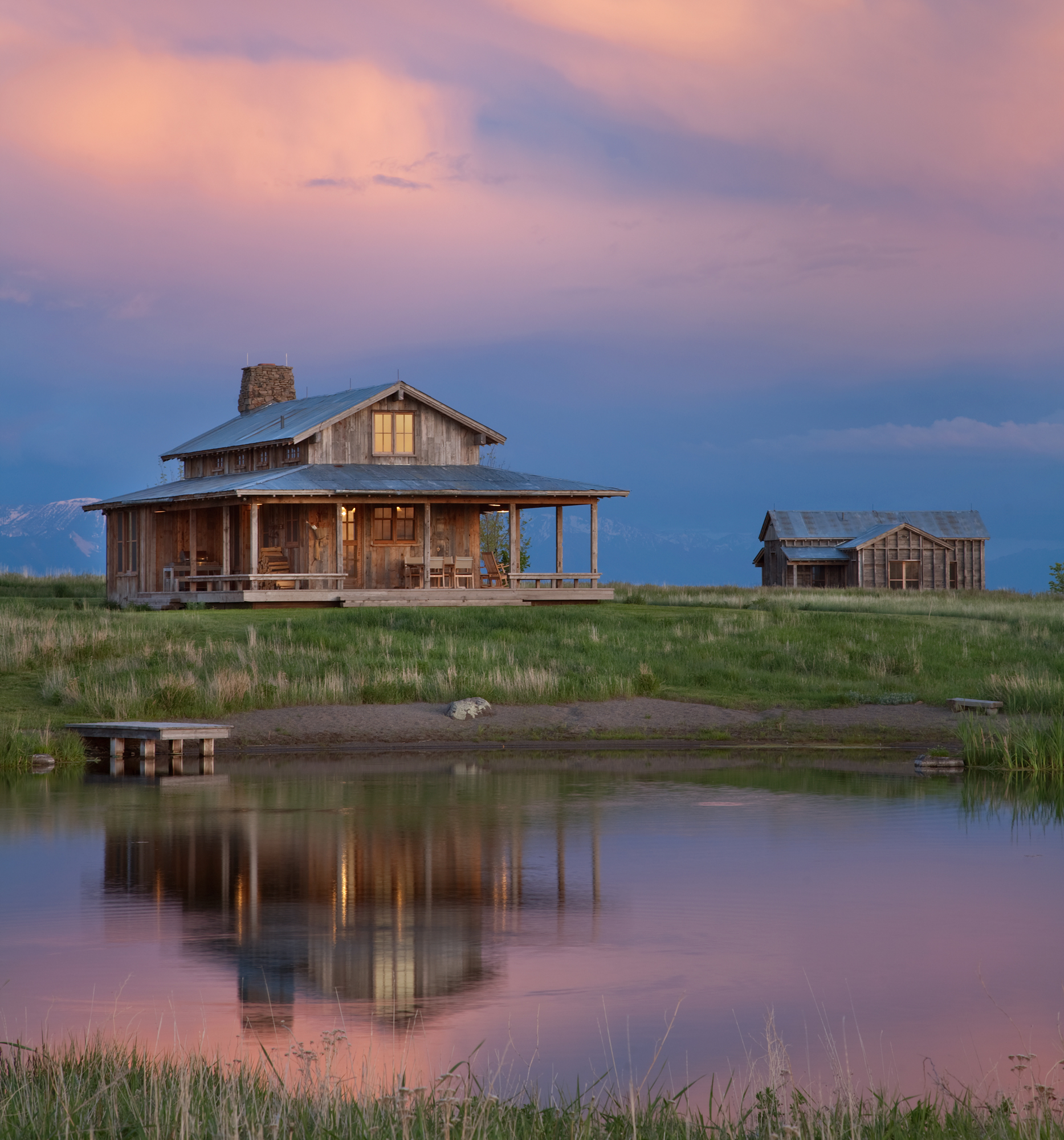
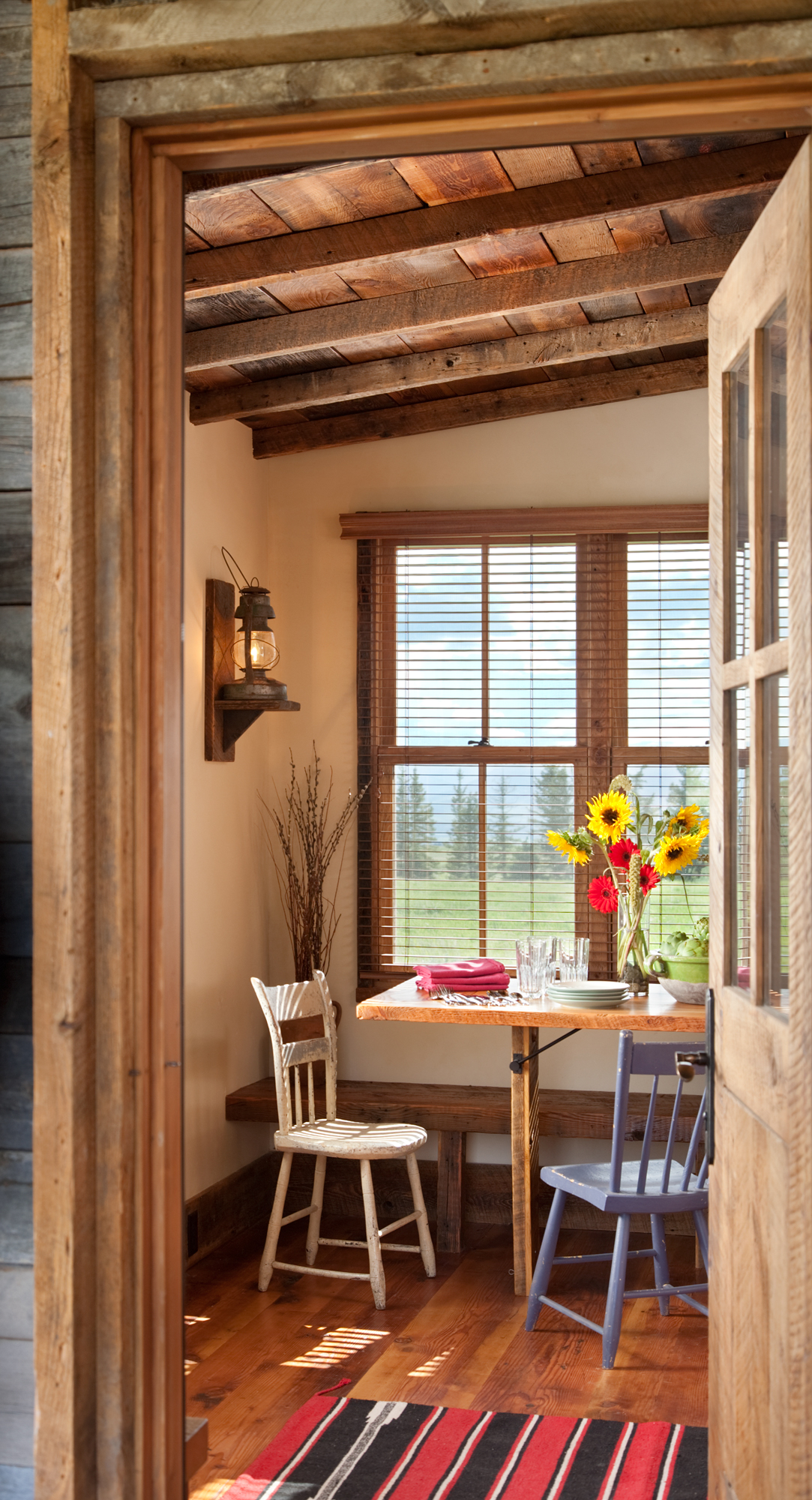
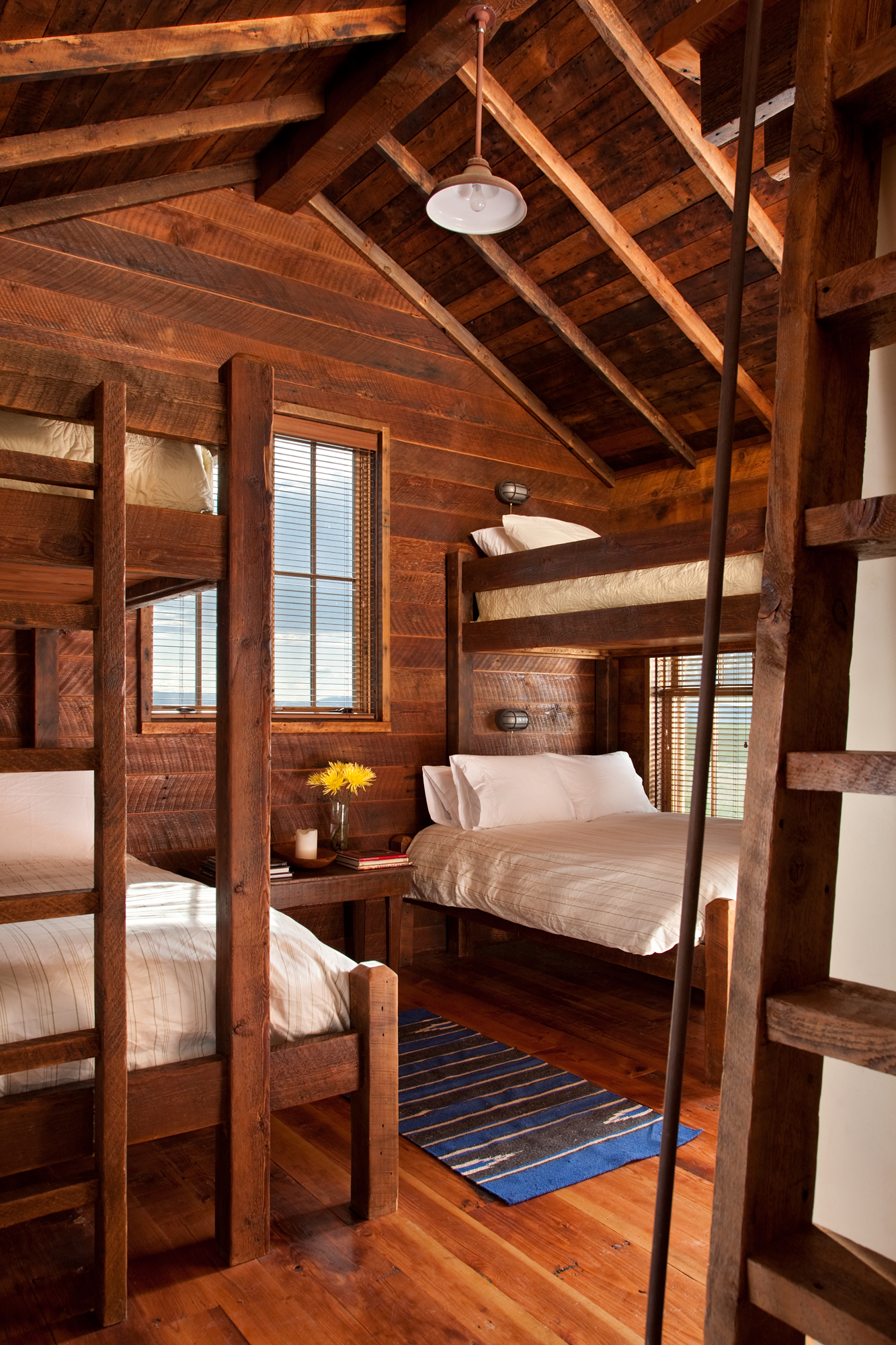
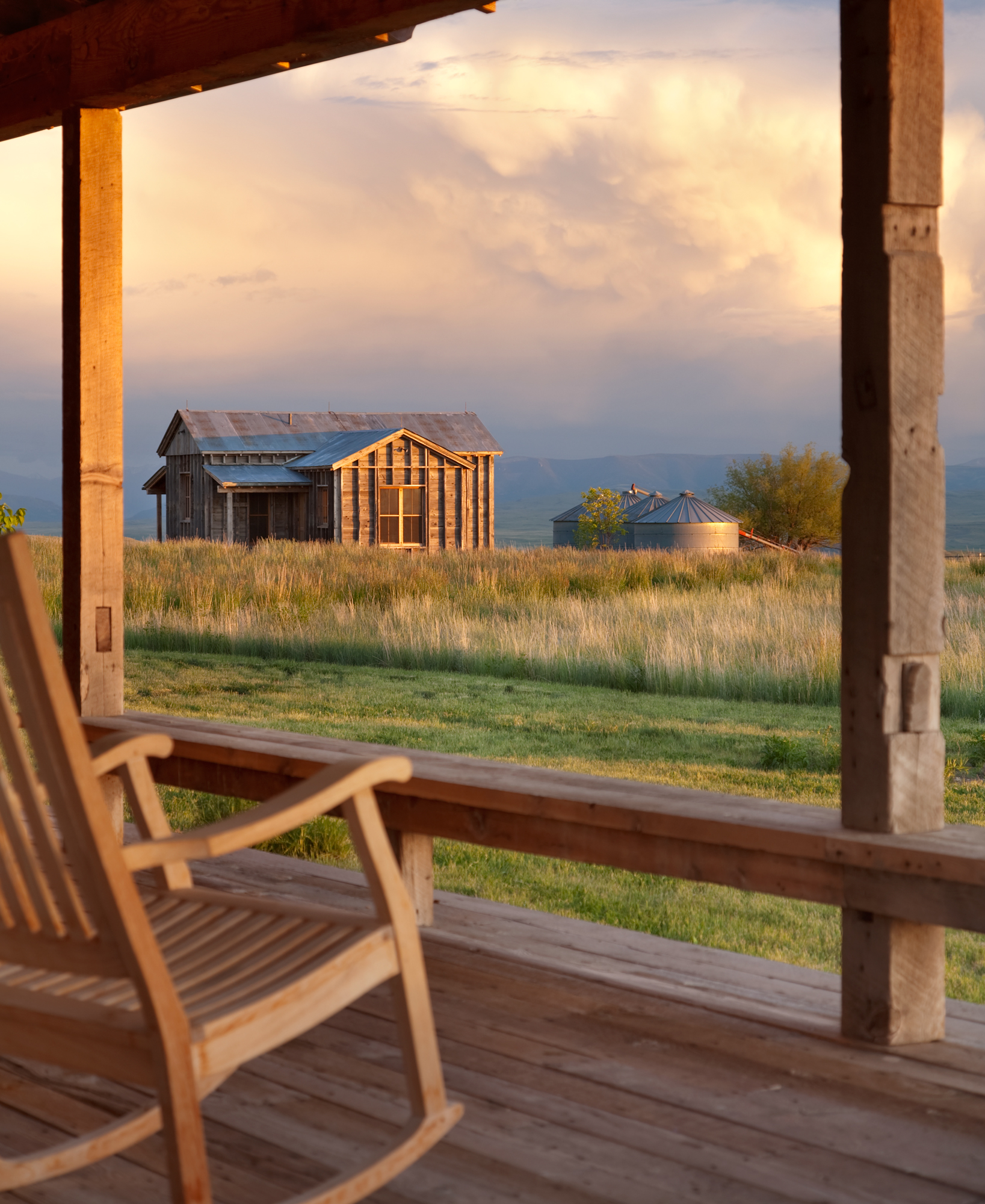
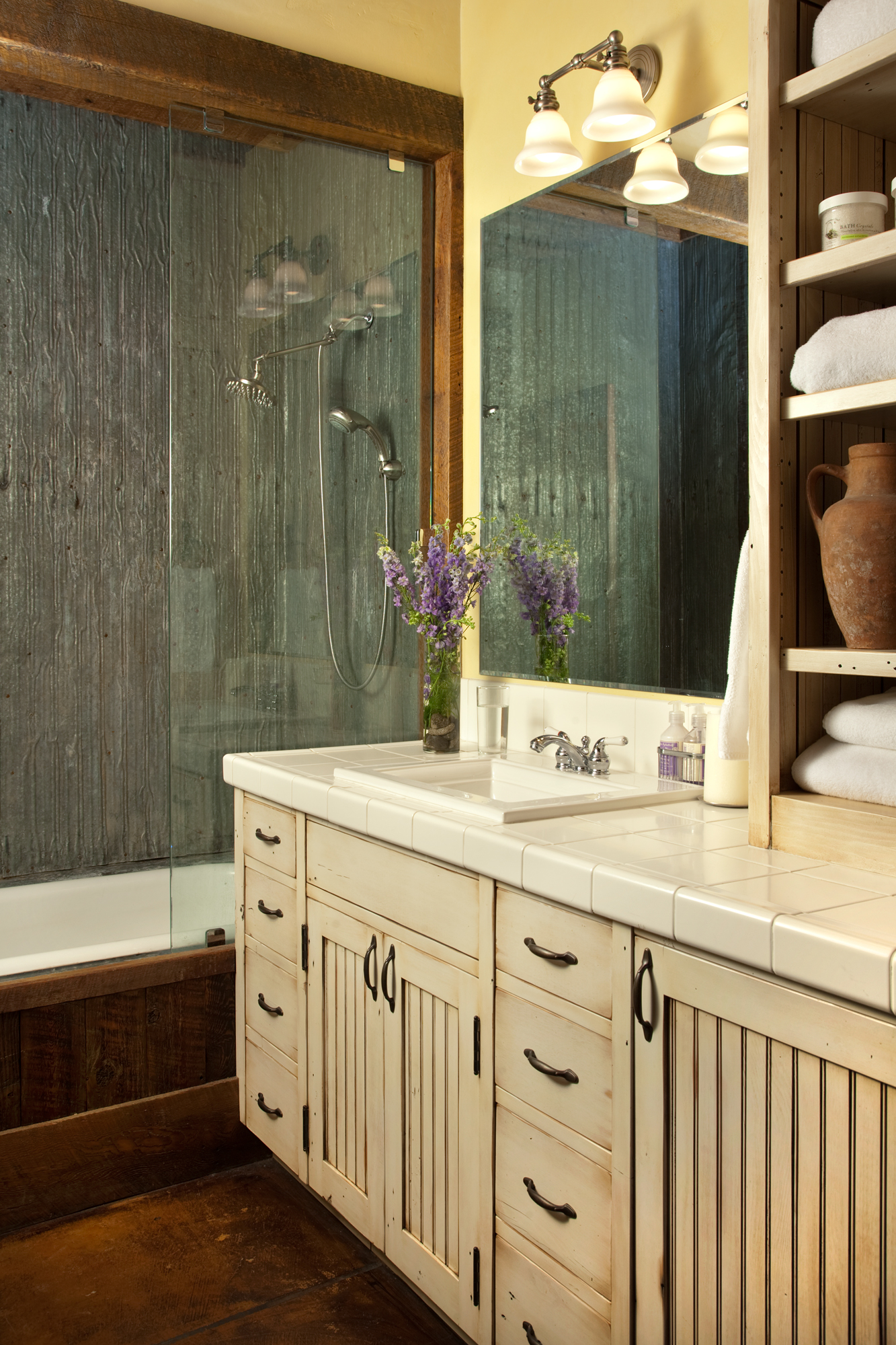


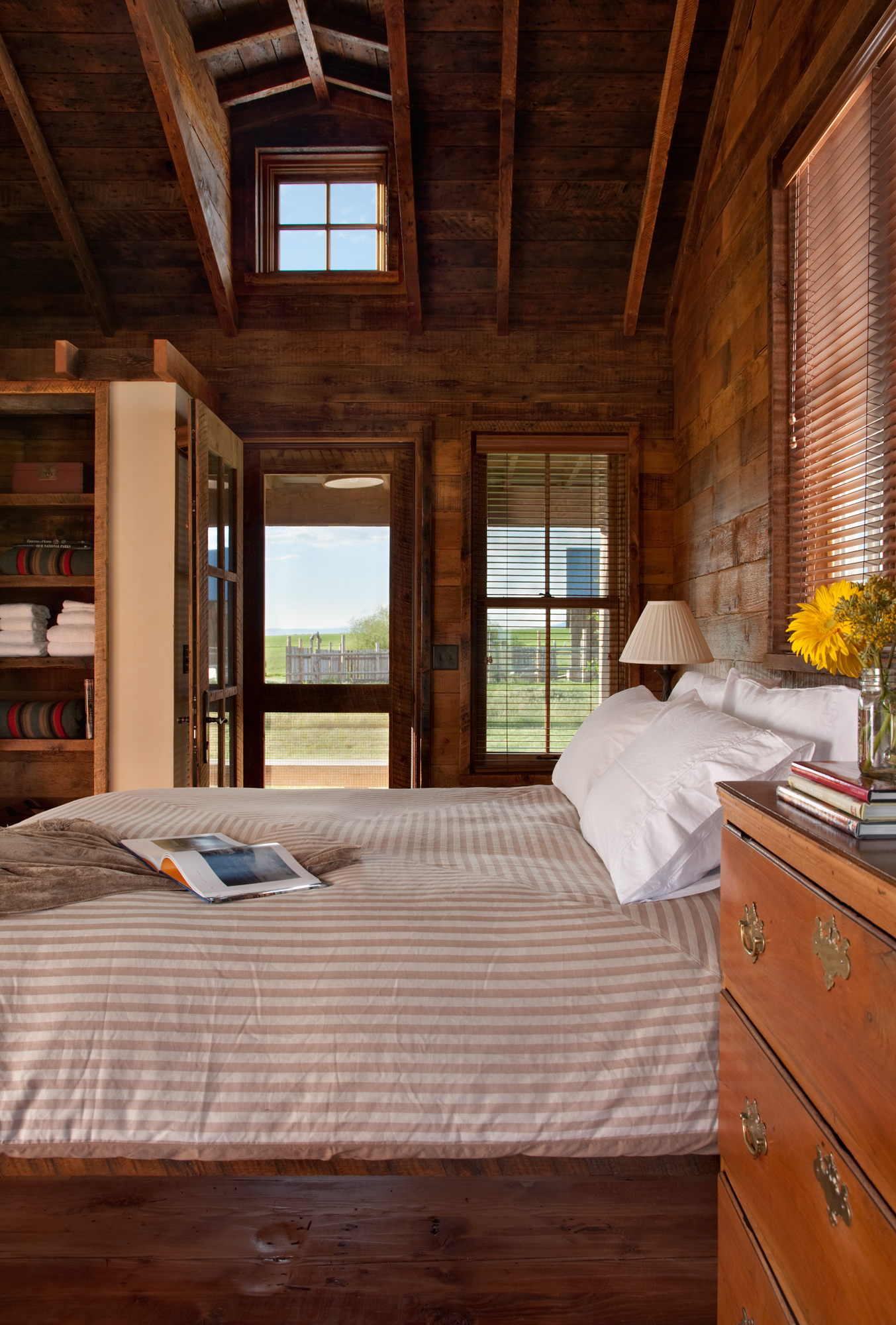
No Comments